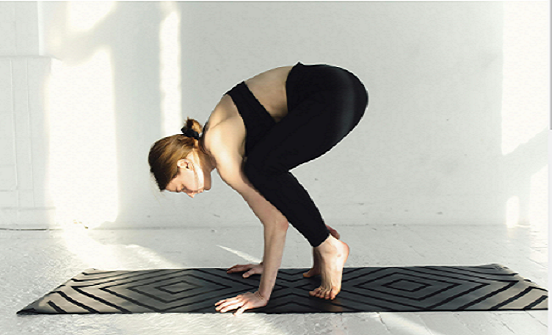Jnana Yoga is one of the classical paths of yoga originating from ancient Hindu philosophy.
It is derived from the Sanskrit word “jnana” meaning “knowledge” and “yoga” meaning “union.”
At its core, Jnana Yoga is the path of acquiring transcendental knowledge and wisdom to achieve moksha, or liberation from the cycle of birth and death.
Three Classical Paths for Moksha:
In Hinduism, there are three principal yoga traditions aimed at attaining moksha – Jnana Yoga (path of knowledge), Karma Yoga (path of action/work), and Bhakti Yoga (path of devotion).
Jnana Yoga is considered the most philosophical and intellectual of these paths, focusing on the pursuit of spiritual knowledge through study, contemplation, and self-inquiry.
Alternative Name:
Jnana Yoga is also commonly referred to as Jnana Marga, which translates to “the path of knowledge” or “the path of spiritual wisdom.”
This alternative name highlights the emphasis placed on gaining a profound understanding of the true nature of reality, the Self (Atman), and the Supreme Brahman.
Historical Background:
- Brief Overview of the Origins of Jnana Yoga:
The roots of Jnana yoga steps can be traced back to the ancient Hindu scriptures, particularly the Upanishads and the Bhagavad Gita.
These sacred texts expounded on the concept of self-realization and the attainment of moksha through the acquisition of transcendental knowledge.
- Ancient Hindu Scriptures and Teachings:
The Upanishads, which form part of the Vedas, are considered the foundational texts of Jnana Yoga.
They contain profound philosophical teachings on the nature of Brahman (the ultimate reality), Atman (the true self), and the path to liberation through self-knowledge.
The Bhagavad Gita, a sacred Hindu scripture, also extensively discusses the principles of Jnana Yoga and its role in attaining moksha.
Influence of Prominent Philosophers and Spiritual Leaders on Jnana Yoga:
Over the centuries, various influential philosophers and spiritual leaders have contributed to the development and dissemination of Jnana Yoga.
Notable figures include Adi Shankara, the 8th-century Hindu philosopher who revived and systematized the teachings of Advaita Vedanta (non-dualism), and Ramana Maharshi, a 20th-century sage renowned for his teachings on self-inquiry and the path of Jnana Yoga.
Philosophy of Jnana Yoga:
- Core Principles and Beliefs of Jnana Yoga:
The central tenet of Jnana yoga steps is the belief that true knowledge and understanding of the Self and the ultimate reality (Brahman) can liberate an individual from the cycle of birth, death, and suffering (samsara).
This knowledge is not merely intellectual but a profound realization of the unity of all existence and the interconnectedness of the individual soul (Atman) with the universal consciousness (Brahman).
- Pursuit of Knowledge and Self-Realization:
Jnana Yoga emphasizes the pursuit of knowledge, not just as an intellectual exercise, but as a means to self-realization and spiritual awakening.
Through the study of sacred texts, contemplation, and self-inquiry, practitioners seek to unravel the mysteries of existence and gain insight into their true nature beyond the limitations of the physical body and mind.
- Concept of Atman (the True Self) and Brahman (the Ultimate Reality):
A central concept in Jnana Yoga is the understanding of Atman (the true self) and Brahman (the ultimate reality).
According to the teachings, the Atman is the eternal, unchanging essence within each individual, while Brahman is the all-pervading, supreme consciousness that underlies the entire universe.
The goal of jnana yoga benefits is to realize the fundamental unity of Atman and Brahman, transcending the illusion of separateness and duality.
Practices and Techniques:
Jnana Yoga encompasses a range of practices and techniques aimed at cultivating self-knowledge and realizing the ultimate truth. These includes Meditation, Self-Inquiry, and Contemplation as Key Components
- Meditation:
Jnana yoga steps place a strong emphasis on meditation as a means to still the mind, developing concentration, and creating an environment conducive to self-inquiry and contemplation.
- Self-inquiry (Atma Vichara):
This practice, popularized by Ramana Maharshi, involves persistently questioning and inquiring into the nature of one’s true Self, beyond the limitations of the body and mind.
- Contemplation (Nididhyasana):
Contemplation involves deeply reflecting on the teachings of sacred texts and philosophical concepts, allowing the mind to penetrate the depths of their meaning and significance.
The Importance of Study and Reflection on Sacred Texts:
Study of sacred texts: jnana yoga benefits encourage the study and analysis of ancient Hindu scriptures, such as the Upanishads, Bhagavad Gita, and the writings of revered philosophers and sages. These texts are considered repositories of profound wisdom and are meant to be studied, reflected upon, and assimilated into one’s understanding.
Common Obstacles Faced in the Practice of Jnana Yoga:
Like any spiritual path, the journey of Jnana Yoga is not without its challenges and obstacles. Some of the common obstacles faced by practitioners include:
- Ego and attachment:
The ego, with its deep-rooted sense of individuality and attachment to material possessions, desires, and concepts, can hinder the realization of the true Self.
- Ignorance (Avidya):
Ignorance, or lack of true knowledge, is considered the root cause of suffering and the primary obstacle to self-realization in Jnana Yoga.
- Mental afflictions:
Negative mental states such as anger, greed, jealousy, and delusion can cloud one’s judgment and impede the pursuit of knowledge and self-inquiry.
Overcome Challenges Such as Ego, Ignorance and Attachment:
To overcome these obstacles, jnana yoga benefits advocate a combination of practices, including:
- Discrimination (Viveka):
Developing the ability to discern between the eternal and the non-eternal, the real and the unreal, and cultivating detachment from the transient aspects of existence.
- Dispassion (Vairagya):
Cultivating a state of dispassion or non-attachment towards worldly desires and objects, which are considered temporary and ultimately unsatisfying.
Spiritual Guide in Guiding Practitioners Through Difficulties:
In the tradition of Jnana yoga steps, the guidance of a qualified guru (spiritual teacher) is highly valued.
A guru who has realized the truth themselves can provide invaluable guidance, dispel doubts, and help navigate the challenges and pitfalls that may arise on the path to self-realization.
Integration with Daily Life:
- How Jnana Yoga Can Be Integrated into Everyday Life?
While Jnana Yoga is a deeply philosophical and introspective path, its principles and teachings are meant to be integrated into one’s daily life and not confined to spiritual practice alone.
- Applying the Principles of Self-Realization and Knowledge in Various Aspects of Life:
By applying the principles of self-realization and knowledge gained through Jnana Yoga, practitioners can develop a more balanced and harmonious approach to various aspects of life, such as:
- Relationships:
Understanding the true nature of the Self can foster more meaningful and fulfilling relationships based on compassion and respect for the inherent divinity in all beings.
- Work and career:
Approaching work with a sense of detachment and non-attachment to outcomes, while maintaining a commitment to excellence, can lead to greater fulfillment and reduced stress.
- Decision-making:
The ability to discriminate between the transient and the eternal can provide clarity and wisdom in making important life decisions.
Examples of How Jnana Yoga Can Enhance Personal Growth and Spiritual Development:
By integrating the teachings of Jnana Yoga into daily life, individuals can experience personal growth and spiritual development in numerous ways, such as:
- Increased self-awareness and mindfulness:
The practice of self-inquiry and contemplation can cultivate a heightened sense of self-awareness and mindfulness, enabling individuals to live more consciously and intentionally.
- Reduced suffering and inner peace:
By gaining insight into the true nature of reality and the Self, practitioners can experience a reduction in suffering and a profound sense of inner peace and equanimity.
- Spiritual evolution:
The knowledge and wisdom gained through Jnana Yoga can facilitate spiritual growth and evolution, leading to a deeper understanding of one’s purpose and connection to the divine.
Benefits and Outcomes of Practicing Jnana Yoga:
The consistent practice of Jnana Yoga can lead to a multitude of benefits, both on a personal and spiritual level.
- Attainment of Self-Awareness, Inner Peace, and Liberation:
One of the primary goals of Jnana Yoga is the attainment of self-awareness, or the realization of one’s true nature as the eternal, unchanging Self (Atman).
This self-realization is believed to bring about a profound sense of inner peace, contentment, and ultimately, liberation (moksha) from the cycle of birth, death, and suffering.
- Transformative Effects of Jnana Yoga on One’s Perspective and Understanding of the World:
By gaining a deeper understanding of the fundamental unity underlying all existence, practitioners of Jnana Yoga can experience a profound shift in their perspective and worldview.
This newfound understanding can lead to a greater sense of interconnectedness, compassion, and respect for all forms of life, as well as a more harmonious relationship with the natural world.
Comparison with Other Paths:
- Comparison of Jnana Yoga with Other Paths to Moksha, Such as Karma Yoga and Bhakti Yoga.
While Jnana Yoga is considered one of the three classical paths to moksha, it is distinct from the paths of Karma Yoga (the path of action) and Bhakti Yoga (the path of devotion).
Karma Yoga emphasizes the performance of selfless action and the renunciation of attachment to the fruits of one’s actions as a means to achieve liberation.
Bhakti Yoga, on the other hand, focuses on cultivating love, devotion, and surrender to the Divine as the path to moksha.
- Unique Aspects and Approaches of Jnana Yoga:
What sets Jnana Yoga apart is its emphasis on the acquisition of transcendental knowledge and the realization of the true nature of the Self and the ultimate reality.
It is a more intellectual and philosophical approach, relying on study, contemplation, and self-inquiry as the primary means to attain self-realization and liberation.
- Complementary Nature of Different Paths Towards Spiritual Liberation:
While the paths of Jnana Yoga, Karma Yoga, and Bhakti Yoga have distinct approaches, they are not mutually exclusive.
In fact, many spiritual traditions acknowledge the complementary nature of these paths and encourage the integration of all three in one’s spiritual journey, as each path can reinforce and support the others in the pursuit of moksha.
Common Challenges and Misconceptions Associated with Jnana Yoga:
Despite its profound teachings and benefits, Jnana Yoga is sometimes misunderstood or associated with certain challenges and misconceptions.
- Misconceptions Regarding Intellectualism and Exclusivity:
One common misconception is that Jnana Yoga is a purely intellectual pursuit, reserved for scholars and those with a high level of education.
However, the true essence of Jnana Yoga is not mere intellectual knowledge but the direct realization of the Self, which is accessible to anyone with sincere dedication and practice.
Another misconception is that Jnana Yoga is an exclusive path, disconnected from the physical and practical aspects of life.
However, as discussed earlier, the teachings of Jnana Yoga are meant to be integrated into daily life, bringing wisdom and clarity to all aspects of one’s existence.
- Importance of Balance and Integration with Other Paths:
While Jnana Yoga places a strong emphasis on the acquisition of knowledge and self-realization, it is essential to maintain a balanced approach and integrate it with other paths, such as Karma Yoga (the path of action) and Bhakti Yoga (the path of devotion).
This integration can help prevent the potential pitfalls of becoming overly intellectual or disconnected from the practical and devotional aspects of spiritual growth.
Jnana Yoga Poses:
Now, let’s explore how the philosophical principles of Jnana Yoga can be integrated with physical yoga practices, specifically through the use of yoga poses or asanas.
While Jnana Yoga is primarily focused on the intellectual and contemplative aspects of self-realization, it can be complemented by the physical practices of yoga, which can aid in cultivating focus, concentration, and body-mind awareness – all essential components for the path of self-inquiry and knowledge.
Here are some yoga poses that can be particularly beneficial for those practicing Jnana Yoga:
1. Sukhasana (Easy Pose)
Sukhasana, or the Easy Pose, is a simple cross-legged seated position that is ideal for meditation, contemplation, and self-study.
This pose encourages a stable and grounded posture, which can help quiet the mind and facilitate introspection.

How to practice Sukhasana?
- Sit on the floor with your legs crossed, ensuring that your knees are slightly lower than your hips.
- Lengthen your spine and keep your shoulders relaxed.
- Place your hands on your knees or in your lap, with your palms facing up or down.
- Focus on your breath and cultivate a sense of stillness and presence.
2. Sarvangasana (Shoulder Stand)
Sarvangasana, or the Shoulder Stand, is an inversion pose that is believed to have numerous benefits, including improved circulation, enhanced focus, and a calming effect on the mind.
This pose can help prepare the body and mind for extended periods of meditation and contemplation.

How to practice Sarvangasana?
- Lie on your back and lift your legs straight up towards the ceiling.
- Support your back with your hands, creating a sturdy base.
- Engage your core muscles and breathe deeply, holding the pose for as long as comfortable.
- To release, slowly lower your legs back to the ground, one vertebra at a time.
3. Padmasana (Lotus Pose)
Padmasana, or the Lotus Pose, is a classic seated posture often associated with meditation and spiritual practices.
This pose encourages spinal alignment, body awareness, and a sense of grounding, which can facilitate deeper states of contemplation and self-inquiry.

How to practice Padmasana?
- Sit on the floor with your legs extended in front of you.
- Bend your right knee and place your right foot at the base of your left thigh, with your heel touching your lower abdomen.
- Repeat the same process with your left leg, placing your left foot at the base of your right thigh.
- Lengthen your spine and relax your shoulders.
- If the full Lotus Pose is too challenging, you can try the Half Lotus variation, with one leg crossed and the other extended.
4. Balasana (Child’s Pose)
Balasana, or the Child’s Pose, is a gentle, restorative posture that can help calm the mind and alleviate stress and tension.
This pose can be particularly useful for those practicing Jnana Yoga, as it encourages relaxation and introspection.

How to practice Balasana?
- Start on your hands and knees, with your knees hip-width apart and your hands shoulder-width apart.
- Shift your hips back towards your heels, extending your arms forward.
- Rest your forehead on the ground or on a cushion, and breathe deeply.
- Hold the pose for as long as comfortable, allowing your body and mind to relax.
Conclusion:
In this comprehensive article, we explored the essence of Jnana Yoga – the path of knowledge and self-realization in Hindu philosophy.
We covered its historical origins, core principles emphasizing the pursuit of transcendental knowledge, key practices like meditation and scriptural study, overcoming obstacles, integrating it into daily life, and its myriad benefits.
We also compared Jnana Yoga with other yoga traditions while addressing common misconceptions. Finally, we discussed how physical yoga poses can complement the philosophical journey.
Jnana Yoga offers a profound and transformative path to self-realization and liberation.
By gaining wisdom into the true nature of reality, the Self, and the universal consciousness, practitioners can experience profound inner peace, clarity, and a shift in perspective.
While intellectually demanding, Jnana Yoga remains a revered spiritual tradition that has inspired countless seekers throughout history to unravel the mysteries of existence and attain the highest state of self-knowledge and moksha.

